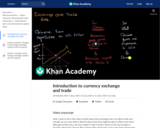
Learn how interest rates, exchange rates, and international trade are intertwined in this video.
- Subject:
- Economics
- Social Science
- Material Type:
- Lesson
- Provider:
- Khan Academy
- Provider Set:
- Khan Academy
- Author:
- Sal Khan
- Date Added:
- 07/27/2021

Learn how interest rates, exchange rates, and international trade are intertwined in this video.

Democracy means "rule by the people," but what general forms does it take? Here we describe participatory democracies, pluralist democracies, and elite democracies and think about some of their potential benefits and negatives.
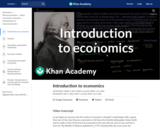
In this video, we introduce the field of economics using quotes from the person that many consider to be the "father" of economics: Adam Smith. Topics include the definition of economics, microeconomics, and macroeconomics as a field and the role of assumptions in economic decisionmaking. Created by Sal Khan.

Introduction to how groups of organisms evolve and how natural selection can lead to evolution.

Introduction to experiment design. Creating a hypothesis. Double-blind testing. Placebo effect.

Introduction to genetic engineering. Human breeding. Recombinant DNA. Bioethics.

Basics of gravity and the Law of Universal Gravitation. Created by Sal Khan.

Heredity and Classical Genetics. Dominant and recessive traits. Heterozygous and homozygous genotypes.
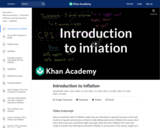
Inflation is an increase in the price level over time. In this video we explore inflation and how it is calculated using a measure called the consumer price index (CPI). Created by Sal Khan.

Interest is effectively a rent on money. In this video, we think about what an interest rate really is. Learn about the difference between simple interest and compound interest and how interest is calculated on a loan using an example of calculating the interest rate on a loan. Created by Sal Khan.

Interest is effectively a rent on money. In this video, we think about what an interest rate really is. Learn about the difference between simple interest and compound interest and how interest is calculated on a loan using an example of calculating the interest rate on a loan. Created by Sal Khan.

Kinetics is the study of reaction rates and how they are affected. Many factors, such as concentration, pressure, temperature, and enzyme activity, can impact the rate of a reaction. For example, a molecule's kinetic energy is directly proportional to its temperature, so increasing the temperature will result in an increase in reaction rate. Created by Sal Khan.
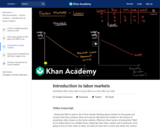
Just like goods and services, the factors of production are exchanged in markets. This video focuses on such market -- the market for labor. The supply of labor is based on people's willingness to tradeoff labor for leisure. The demand for labor is based on labor's marginal revenue product.

Light and the electromagnetic radiation spectrum. Wave and particle-like behavior, and how to calculate the wavelength or frequency of a light wave. Created by Sal Khan.

Introduction to lipids like fats and phospholipids.

An introduction to magnetism. Created by Sal Khan.
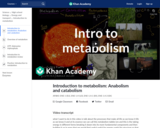
Overview of metabolism, anabolism, and catabolism.

Momentum (P) is equal to mass (M) times velocity (v). But there are other ways to think about momentum! Force (F) is equal to the change in momentum (ΔP) over the change in time (Δt). And the change in momentum (ΔP) is also equal to the impulse (J). Impulse has the same units as momentum (kg*m/s or N*s). Created by Sal Khan.

Learn how mortgages work, how to use a mortgage calculator, and how to use a spreadsheet to show the payoff of a mortgage over time and the interest paid each year.

Introduction to nucleic acids (e.g., DNA and RNA) and nucleotides.